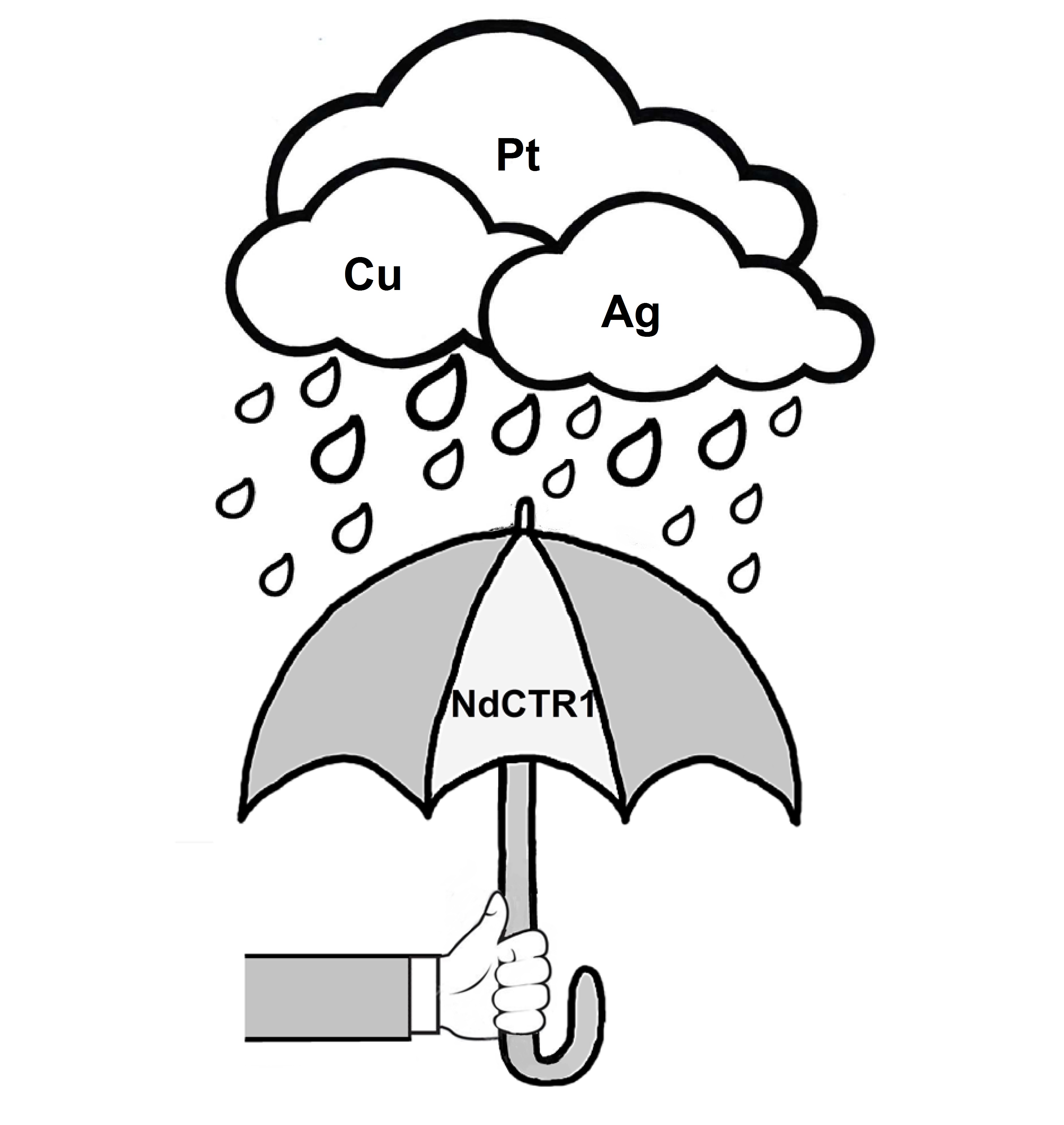There is much interest in effective copper chelators to correct copper dyshomeostasis in neurodegenerative and oncological diseases. In this study, a recombinant fusion protein for expression in E. coli cells was constructed from glutathione-S-transferase (GST) and the N-terminal domain (ectodomain) of human high affinity copper transporter CTR1 (hNdCTR1), which has three metal-bound motifs. Several biological properties of the GST-hNdCTR1 fusion protein were assessed. It was demonstrated that in cells, the protein was prone to oligomerization, formed inclusion bodies and displayed no toxicity. Treatment of E. coli cells with copper and silver ions reduced cell viability in a dose- and time-dependent manner. Cells expressing GST-hNdCTR1 protein demonstrated resistance to the metal treatments. These cells accumulated silver ions and formed nanoparticles that contained AgCl and Ag0. In this bacterial population, filamentous bacteria with length about 10 μm were often observed. The possibility for the fusion protein carrying extracellular metal binding motifs to integrate into the cell’s copper metabolism and its chelating properties are discussed.

